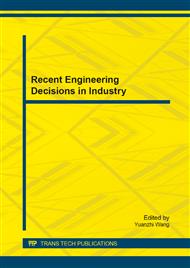p.128
p.137
p.143
p.149
p.155
p.159
p.166
p.175
p.180
Rebound Hammer Tests of Calcium Silicate Bricks – Effects of Internal Compressive Stress on Measurement Results
Abstract:
The rebound hammers of the Schmidt system belong among the non-destructive testing methods that are used for determining compressive strength of building materials, most often concrete and rocks. Calibration relations between the rebound number and compressive strength must be available to determine the compressive strength. Calibration relations are determined on the basis of destructive and non-destructive tests of test specimens. This paper deals with the effects of internal compressive stress in calcium silicate bricks on measurement results obtained using the L-type Schmidt hammer. Based on the obtained information, in order to process calibration relations, it is recommended to apply such force to the test specimens, which corresponds to the internal compressive stress 10-15% of the final compressive strength. We do not recommend measuring on firmly supported bricks only.
Info:
Periodical:
Pages:
155-158
Citation:
Online since:
July 2014
Authors:
Price:
Сopyright:
© 2014 Trans Tech Publications Ltd. All Rights Reserved
Share:
Citation:


